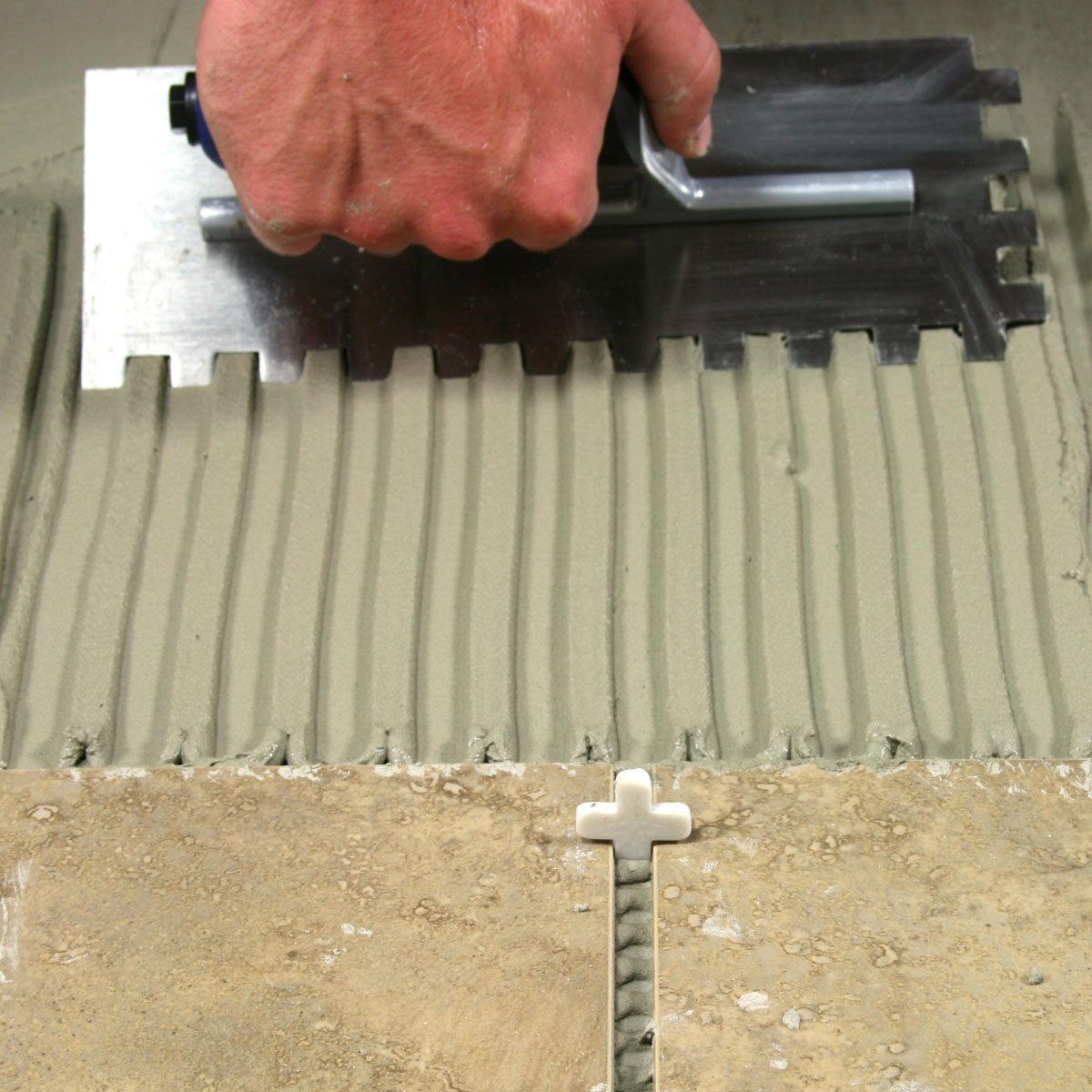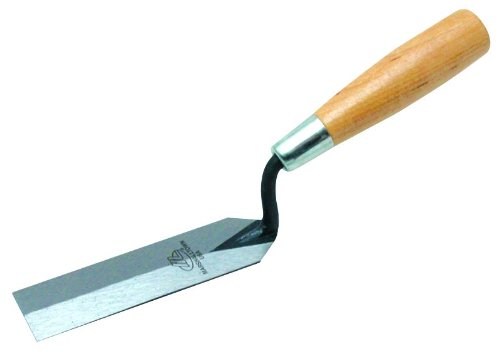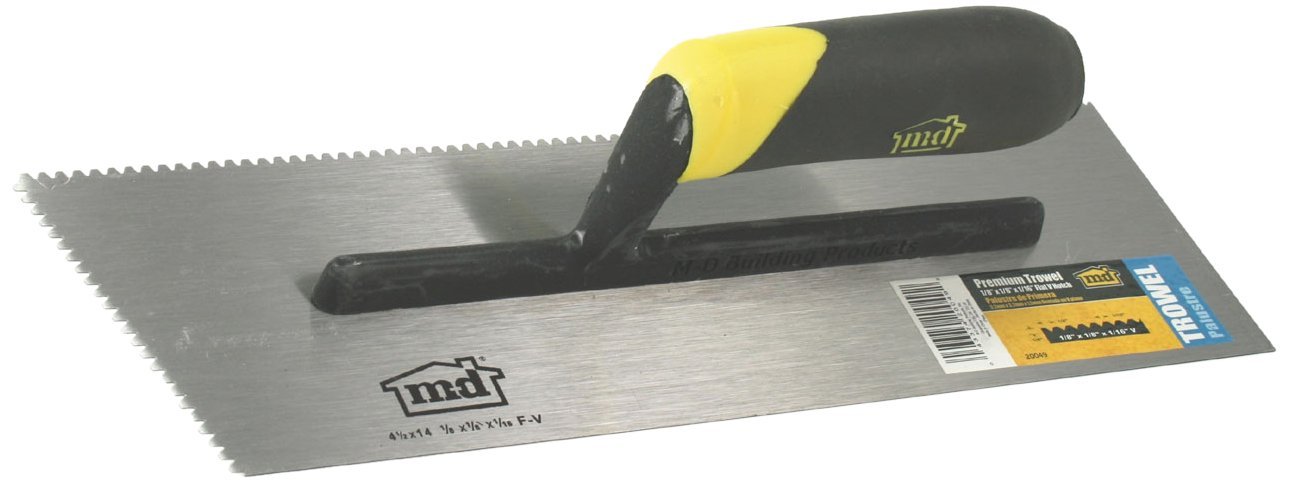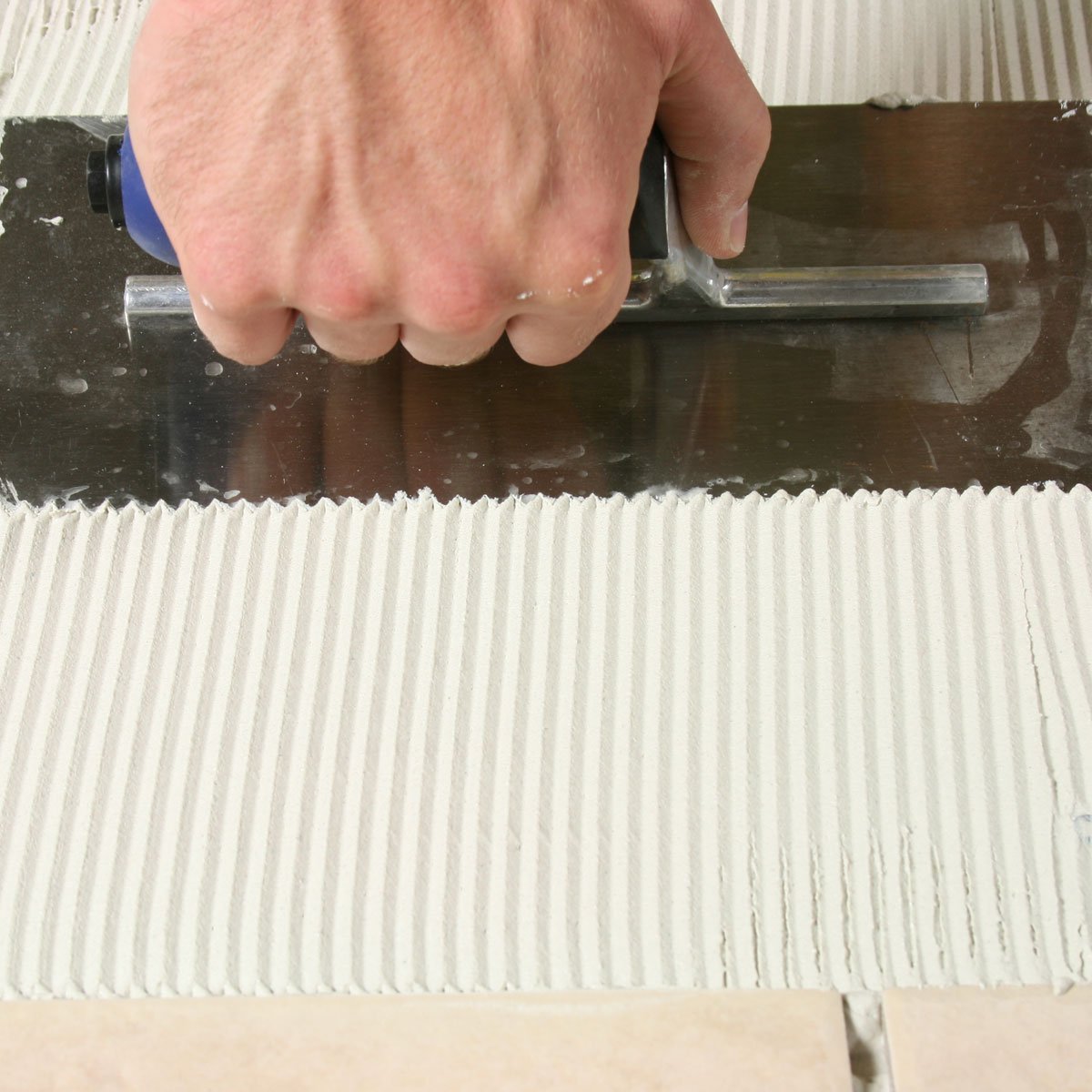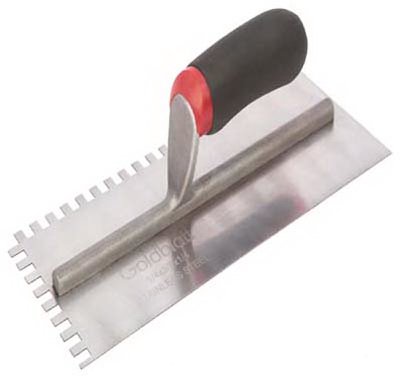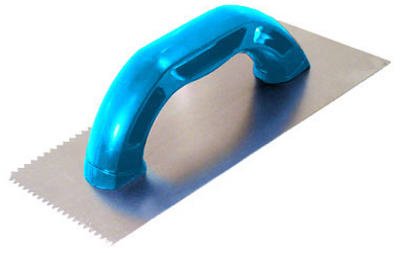Trowels are a necessity for completing all tiling projects. But of course you will have to make sure you have the right one for the job at hand to make sure it is a success. So here’s what you need to know about tile trowels before getting started.
Margin Trowels
These simple tools are one of the most useful and inexpensive making them an essential part of your tool kit. In tiling they are used for a wide array of jobs like mixing tile grout and adhesive, back buttering for extra adhesion, cleaning grout lines, prying sunken tiles, helping with tile removal, cleaning up messes, and even scooping from your mixing bucket . Because they are also used for many other purposes such as masonry they come in a lot of different sizes. The best margin trowel size for working with tile is one that has a blade that is six to eight inches long and is two inches wide.
Notched Trowels
When it comes time to apply the tile adhesive also called thinset you’ll need a notched trowel. Their design uses three sides to accomplish this one which is flat and two that are notched with a U, V, or square shaped notches. The flat side is used to apply the thinset to the substrate. The other two notched sides, one long and one short, are used to comb over the thinset so that it is left with the correct amount to adhere to the tile in a series of uniform ridges without an excess.
There are multiple shapes and sizes of notches each of which that is suited for different types and sizes of tile. In general the larger the size of the notch the more thinset it is meant to apply while smaller notched apply less. The shape can also make a difference as V-shaped notches spread the least concentration of adhesive, while square notches the most with the U-shaped variety in the middle. By using too little thinset you run the risk of broken or cracked tiles while too much can be a major pain to remove and is always a mess. It is therefore very important to choose the right size notches.
Here’s a quick tile trowel size guide to help you out:
-For mosaics two inches square or less try a 3/16” X 5/32” V-notch trowel.
-For mosaics up to four inches square try a 1/4” X 3/16” V-notch trowel.
-For floor and wall tile four inches to eight inches square try a 1/4” X 1/4″ square or U-notched trowel.
-For floor and wall tile eight to sixteen inches square try a 1/4” X 3/8” square or U-notched trowel.
-For floor and wall tile sixteen to twenty four inches try a 1/2” X 1/2″ square or U-notched trowel
Extra Notched Trowel Tips
If you are not sure if you are using the correct size during setting you can easily check by setting a few tiles first and then quickly prying them up and looking to see if the entire surface has made contact with the adhesive. If not, simply move up to a trowel with the next size notch. It may also happen that the size you are using is too big, you’ll be able to tell if this is the case if there is excess adhesive coming up around the edges of the tile. For tiles twelve inches in size and up back buttering with thinset is usually a good idea as well. Tiles which have a textured back should be back buttered too, and may require a large notched trowel such as one that is 1/2″ X 1/2″.
Both the margin and notched variety are tile trowels that you’ll definitely need to complete setting as well as other important tasks. Very handy yet cheap, they are essential tools that absolutely won’t break your budget. Just make sure you purchase the type and size which best suits the needs of your installation and whether you are mixing grout or setting tile you’ll be on the fast road to a winning end result.
CLICK HERE NOW to find the right tile trowel for your project!
